2024 Full-Size Pickup Truck Challenge: Which Truck Is the Fastest?


We know that pure speed probably isn’t top of mind for pickup truck shoppers — even if trucks keep getting quicker and quicker. That said, we wanted to know how quick the three trucks in our comparison test — the 2024 Ford F-150 Platinum hybrid, 2024 GMC Sierra 1500 Denali Ultimate and 2025 Ram 1500 Tungsten — were with and without roughly 1,000 pounds of payload, so we took them to Great Lakes Dragaway in Union Grove, Wisc., as part of our testing.
2024 Full-Size Pickup Truck Challenge
Results | Winner | Towing | Acceleration and Braking | Real-World MPG
Similarities Stop Under the Hood
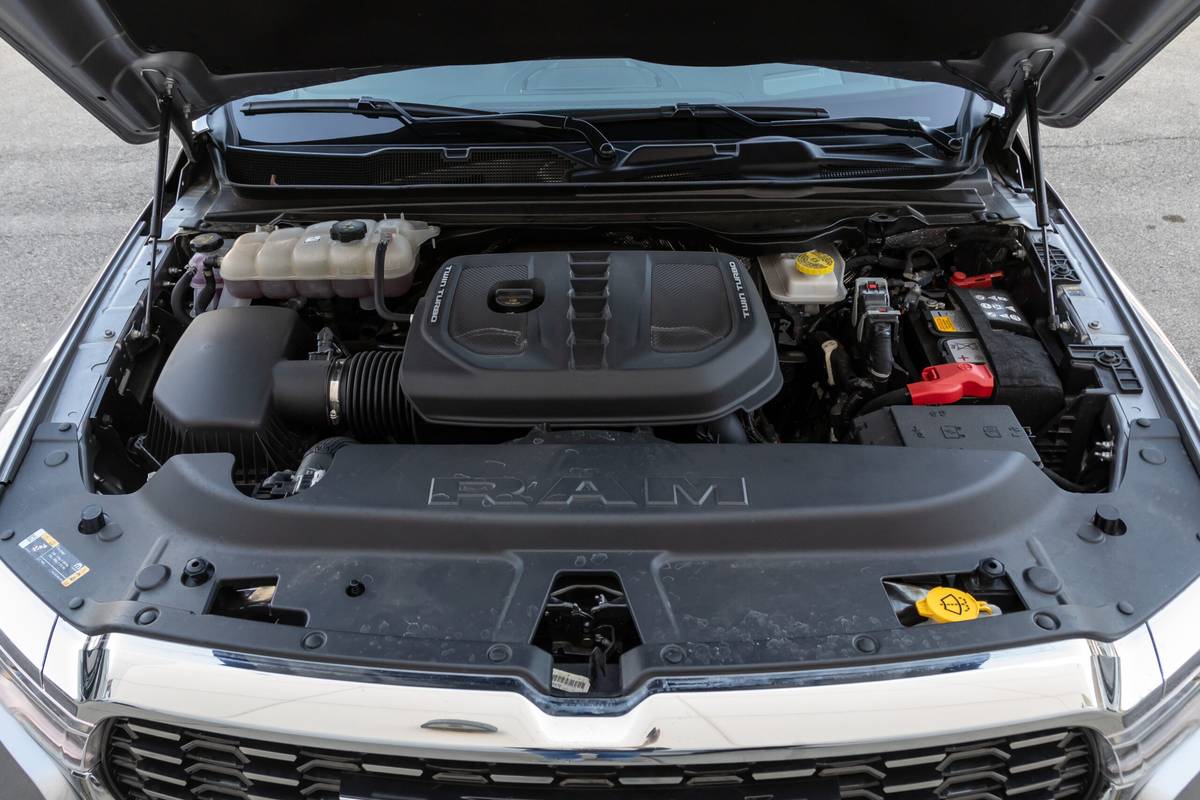
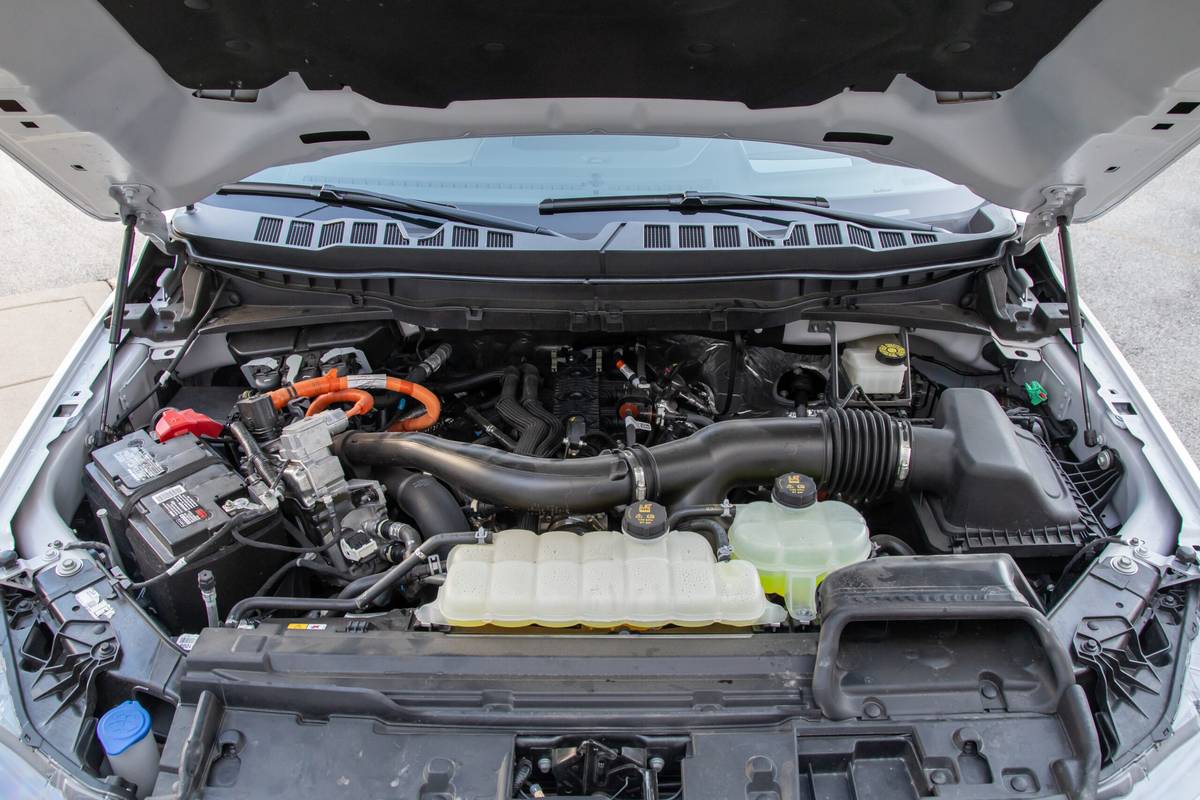
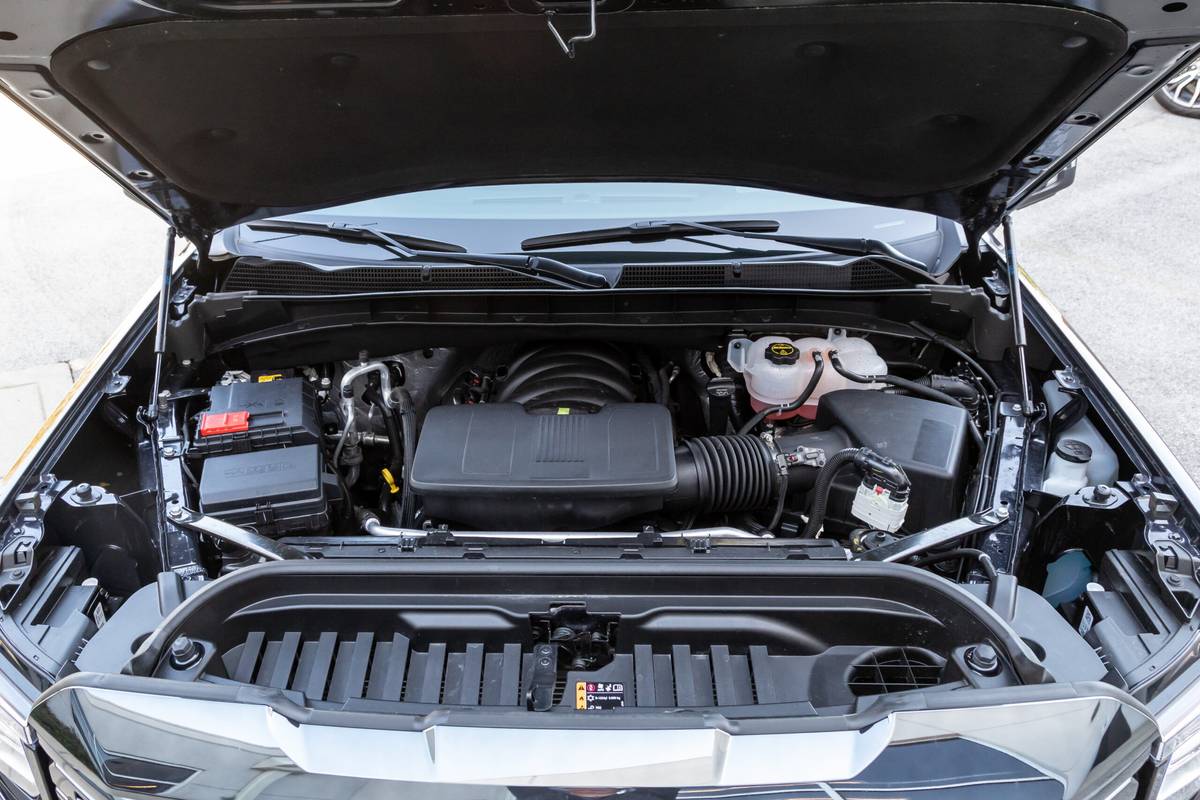



Each of these trucks takes significantly different powertrain approaches: The Ford is a hybrid; the GMC uses a naturally aspirated 6.2-liter V-8; and the Ram is the trendiest with its high-output twin-turbocharged inline-six-cylinder engine. Power figures also run the gamut: The F-150 has 430 horsepower and 570 pounds-feet of torque; the GMC’s V-8 was once one of the hot rods in the segment but now “only” makes 420 hp and 460 pounds-feet; and the Ram’s twin-turbo inline-six Hurricane engine produces 540 hp and 521 pounds-feet.
Getting the best acceleration times from these trucks proved fairly straightforward, though each needed its own technique. The GMC was the easiest — just mash the gas and go. Brake torquing only produced slower times, with the truck killing power before releasing the brake. The Ford didn’t require much different, but it approached the line under all-electric power, so a little bit of throttle to get the gas engine running before leaving the line was most effective. The Ram, meanwhile, loved brake torquing like a true performance machine and revved into the 3,000-4,000 rpm range before putting down its best times. Just mashing the gas, on the other hand, cost the Ram roughly half a second in both 0-60 mph and quarter-mile times because the turbos weren’t ready for action from idle.
Related Video:
We tried different drivetrain settings, too, but ultimately settled on Sport mode and Four-Auto as the method to achieve the fastest times in all the trucks. The Ram’s Sport mode also turns off traction control, but it fared better when that was turned back on. With payload, we switched from Sport to Tow/Haul, and that was it. These aren’t complicated, high-strung sports cars with a laundry list of steps to take to get the quickest times.
Ram’s Hurricane Powertrain Whips Up Some Impressive Numbers
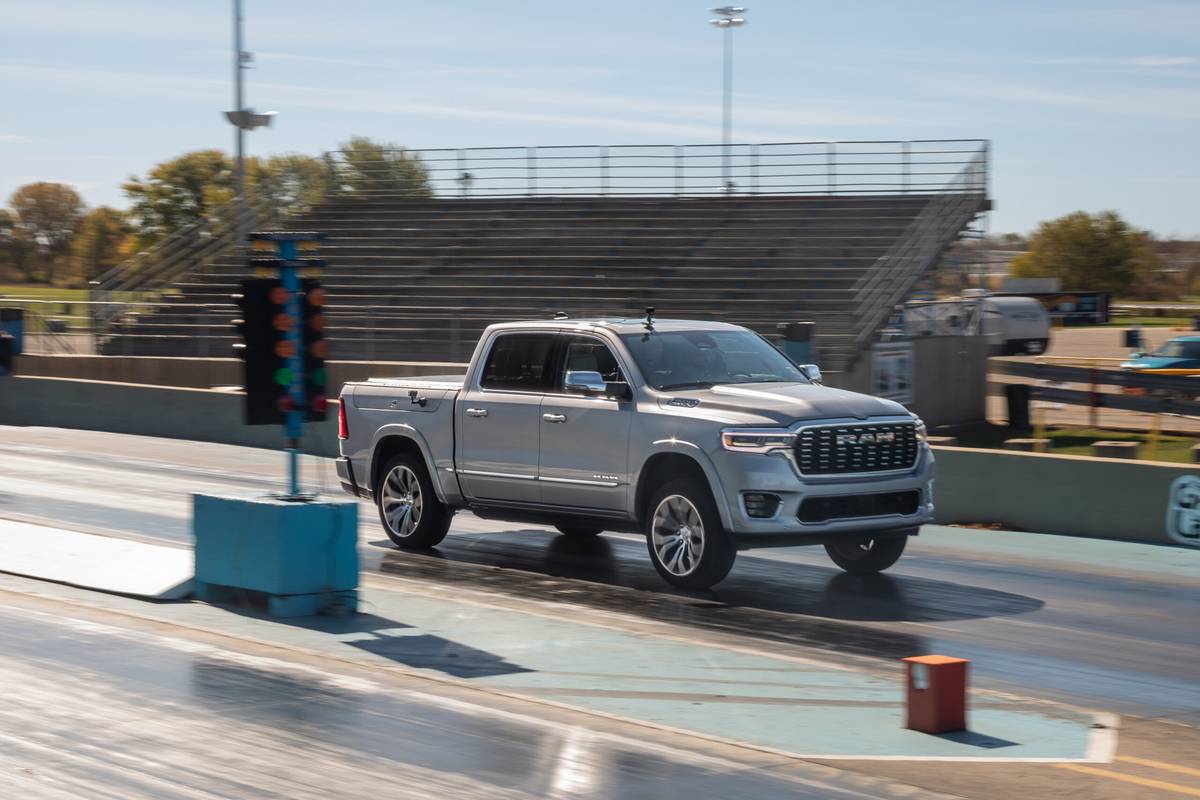
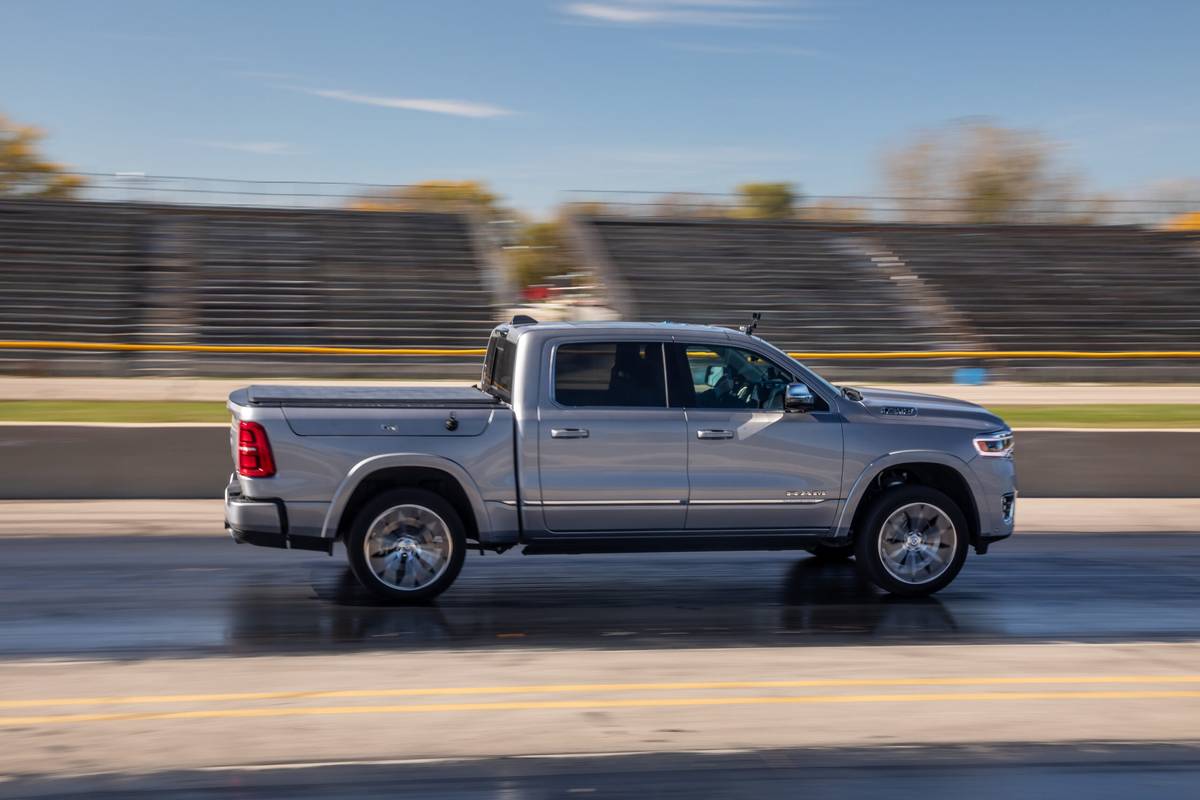


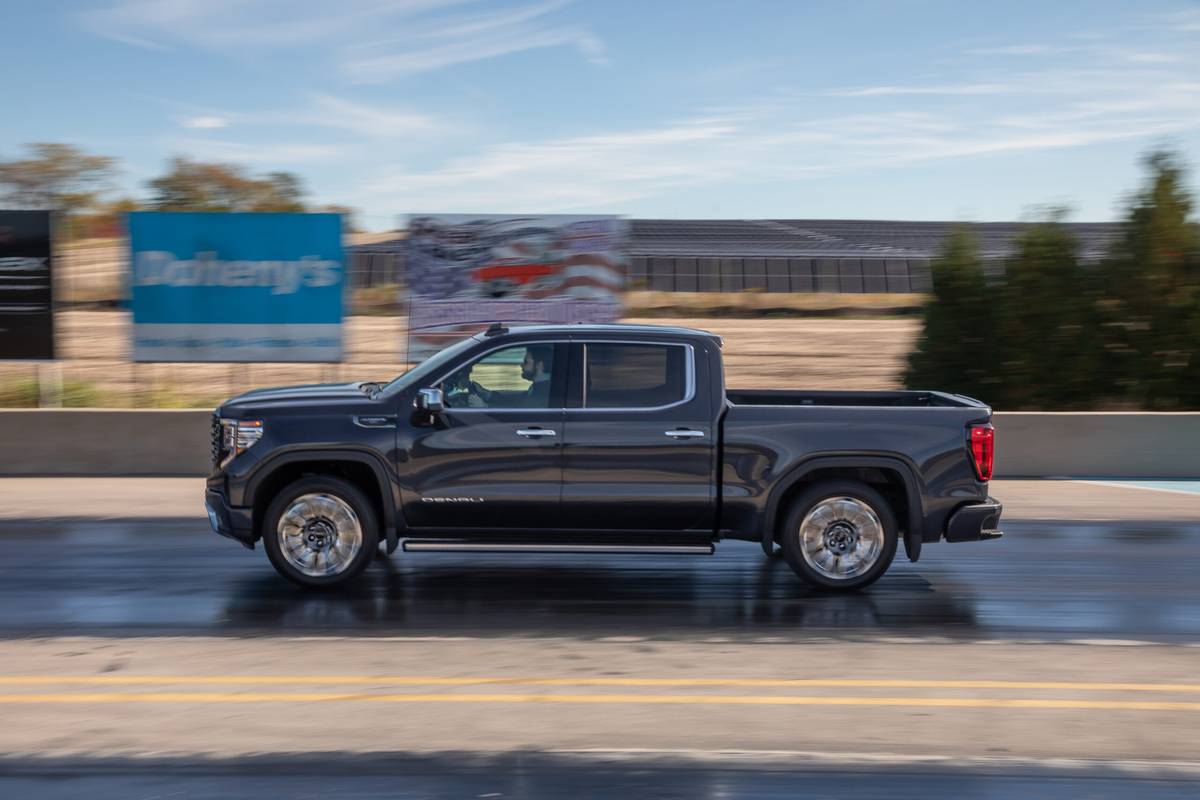





The Ram quite literally ran away with this test. Without payload, it rocketed to a 4.75-second 0-60 time while finishing the quarter-mile in 13 seconds flat at 104.9 mph. Those times would put it right on the cusp of the 25 quickest vehicles we’ve ever taken to a drag strip, and they’re far and away the quickest times we’ve ever gotten out of a street truck (a 2021 Ram 1500 TRX managed a 0-60 time of 4.1 seconds and ran the quarter-mile in 12.5 seconds at 107 mph). It’s worth noting that this is probably the least real-world replicable of the times in this test — owners probably aren’t revving their truck up at every stoplight before taking off.
Second quickest was the Ford, managing an otherwise respectable 5.62-second 0-60 on the way to a 13.82-second quarter-mile time at just under 100 mph. The Ford was the most consistent truck in the test, too, also putting up 5.63-, 5.64- and 5.68-second 0-60 times.
In third place was the GMC, once the rocket ship of the class. The last time we compared full-size trucks at a drag strip, a 2019 Sierra 1500 with the 6.2 V-8 managed a 6.46-second 0-60 time (on an eighth-mile track, so this test’s quarter-mile times aren’t comparable). Updates to the Sierra’s powertrain since then include a switch to the excellent 10-speed automatic transmission present in our test truck, and the 5,580-pound Sierra was also the lightest truck in this test by roughly 400 pounds. This Sierra 1500 Denali Ultimate managed a quicker 6.16-second 0-60 time and finished the quarter-mile in 14.17 seconds at 99.34 mph, but the gulf between the other trucks was noticeable. I’m not sure I cared, though, because the Sierra’s exhaust note is wonderful; I could listen to it all day.
Loaded Up, Not That Slowed Down

We added around 1,000 pounds of sandbags in each truck’s bed and ran them again, and if you think the Ram was quick already, consider this: Its best loaded 0-60 time of 5.27 seconds and quarter-mile time of 13.53 seconds at 101.85 mph were both quicker than the Ford’s and GMC’s unloaded times. Again, this was with our track-specific launch technique, but when just taking off from a stop with the accelerator pedal to the floor, the Ram was just a bit slower than the unladen F-150. Any way you look at it, this new Hurricane high-output powertrain is quick.
The finishing order with payload didn’t change, with the Ford coming in second once again. The Ford’s 0-60 time with payload was 6.18 seconds, and its quarter-mile time was 14.4 seconds at 96.04 mph.
The added payload weight negatively affected the Sierra 1500 the most. Its best loaded 0-60 time of 6.99 seconds was 0.83 second slower than its best unloaded time. In the quarter-mile, the Sierra crossed the line in 14.92 seconds at 94.6 mph — three-quarters of a second and 4.74 mph slower than its best unloaded run.
Once again, though, if you gave me one of these trucks to do this again for my own enjoyment, I’d take the GMC. Its exhaust note and responsive powertrain are endlessly fun even if the resulting times aren’t the swiftest.
Braking Matters, Too

We also conducted unloaded and loaded 60-0 mph stopping-distance tests. Unloaded, the Ford had the shortest measured stopping distance at 134.71 feet, followed by the Ram at 139.75 feet, and the GMC brought up the rear at 146.3 feet.
With payload, however, the results changed dramatically. The GMC stopped the shortest with a distance of 139.38 feet — nearly 7 feet shorter than its unloaded braking distance. The Ford, however, needed more runway and stopped in 141.03 feet, 6.32 feet longer than its unloaded stopping distance. The Ram was most impacted by the payload, stopping in 146.14 feet, 6.39 feet farther than its unloaded measurement.
The GMC had the most linear and confident brake-pedal feel of these three trucks, but this is even more evidence that feel doesn’t always translate to performance.
What Did We Learn?
First, pickup trucks are just getting quicker and quicker. This new Ram isn’t the first truck we’ve tested that’s broken the 5.0-second 0-60 barrier, but it’s the first mainstream one to do so in our testing. It also probably won’t be the last.
Second, and most obvious, is that adding payload changes the driving characteristics of any pickup truck. All three pickups in this test were unsurprisingly slower with added weight but differed in how slow they were; meanwhile, the GMC actually managed a shorter stopping distance with payload than without, while the Ford and Ram needed greater distances. The lesson to take from this testing is to consider how what you’re doing with your truck will affect how it drives — you should be extra cautious with payload, merging and passing, and you should be mindful that you’ll likely need more room to stop.
Third, being the fastest doesn’t always mean being the most enjoyable. The Ram made me laugh on its way to relatively absurd acceleration times, but once the novelty wore off, it wasn’t that enjoyable. The Ford, meanwhile, was all business, but the GMC and its sonorous V-8 were a delight. There’s a value to this that doesn’t show up in its times, and it’s worth noting that the Ram 1500 no longer offers any V-8 powertrain and the F-150 doesn’t offer a V-8 on higher trims like our Platinum model. The GMC may not have won our measured acceleration tests, but it won our hearts.
Cars.com’s Editorial department is your source for automotive news and reviews. In line with Cars.com’s long-standing ethics policy, editors and reviewers don’t accept gifts or free trips from automakers. The Editorial department is independent of Cars.com’s advertising, sales and sponsored content departments.

Road Test Editor Brian Normile joined the automotive industry and Cars.com in 2013, and he became part of the Editorial staff in 2014. Brian spent his childhood devouring every car magazine he got his hands on — not literally, eventually — and now reviews and tests vehicles to help consumers make informed choices. Someday, Brian hopes to learn what to do with his hands when he’s reviewing a car on camera. He would daily-drive an Alfa Romeo 4C if he could.
Featured stories
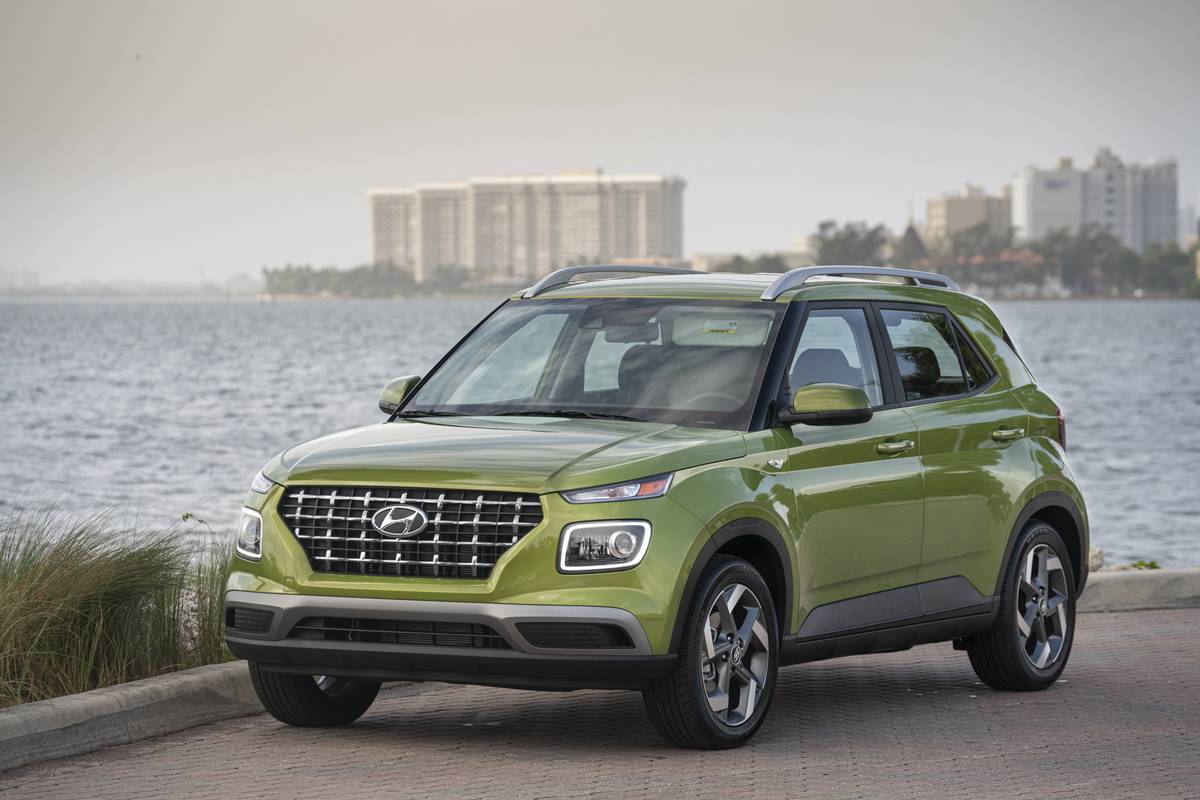
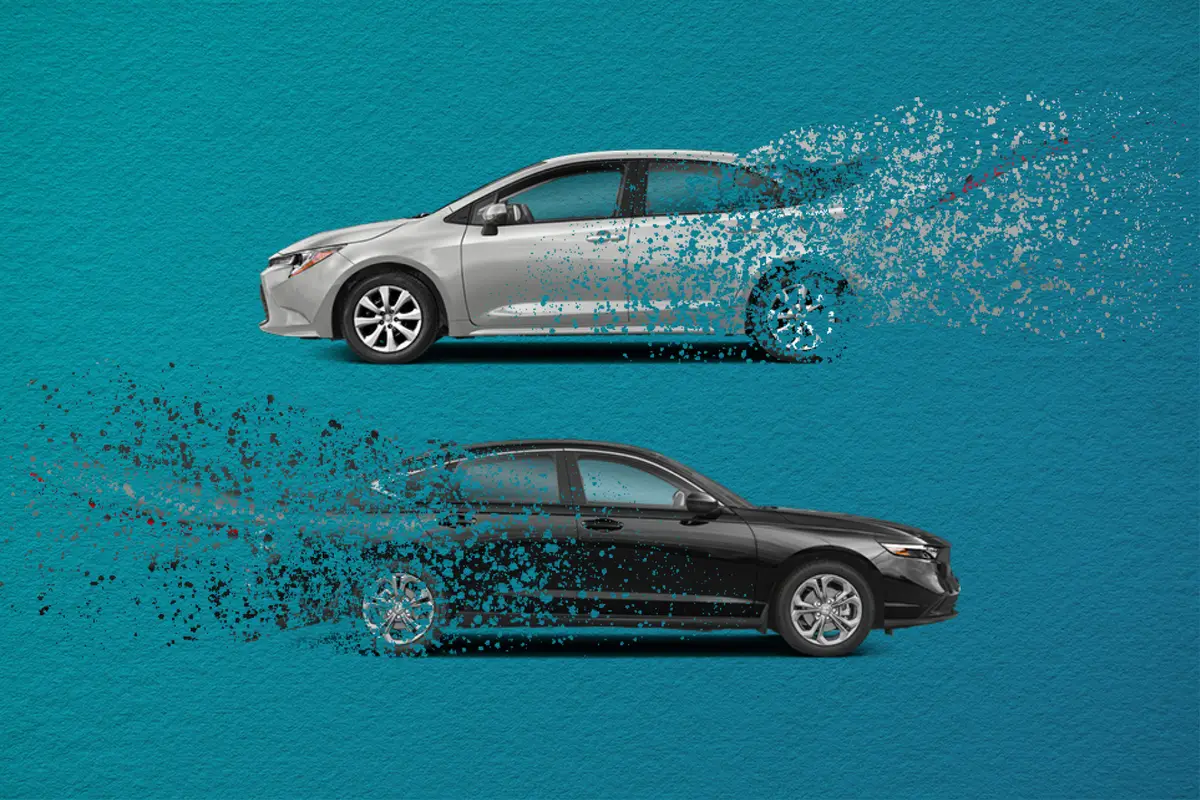
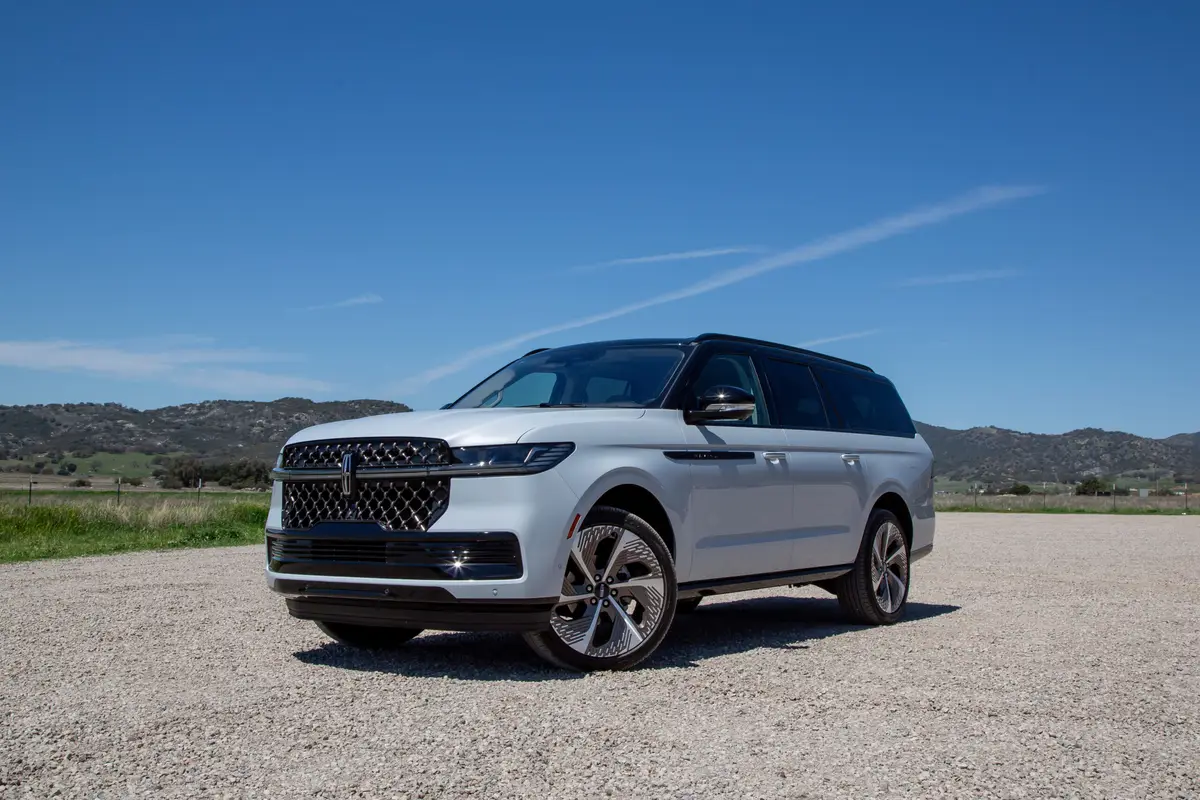
2025 Lincoln Navigator Review: Elephantine Elegance




